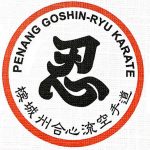Penang Chinese Girl High School Karate-Do Club
合心流空手道
Karate Do
– martial art developed in the Ryukyu Islands in what is now Okinawa, Japan
– developed from the indigenous martial arts of Ryukyu Islands under the influence of Chinese martial arts
– striking art using punching, kicking,knee strikes, elbow strikes & open hand techniques such as knife-hands, spear-hands, and palm-heel strikes. In some styles,grappling, throws, joint locks, restraints, and vital point strikes are also taught.
Practice
– Can be practiced as an art, as a sport, as a combat sport, or as self defense training
-Traditional karate places emphasis on self-development
-Modern Japanese style training emphasizes the psychological elements incorporated into a proper kokoro (attitude) such as perseverance, fearlessness, virtue, and leadership skills
– Places emphasis on exercise and competition
– Weapons is important training activity in some styles of karate.
-Karate training is commonly divided into kihon (basics or fundamentals), kata (forms), and kumite (sparring).
A) Kihon
– Karate styles place varying importance on kihon
– Performance in unison of a technique or a combination of techniques by a group of karateka
– Prearranged drills in smaller groups or in pairs.
B) Kata
– Means literally “shape” or “model”
– Formalized sequence of movements which represent various offensive and defensive postures
– The applications applied in a demonstration with real opponents is referred to as a Bunkai , shows how every stance and movement is used
– Bunkai is a useful tool to understand a kata
To attain a formal rank the karateka must demonstrate competent performance of specific required kata for that level. The Japanese terminology for grades or ranks is commonly used. Requirements for examinations vary among schools.
C) Kumite
– Sparring in Karate is called kumite
– Means “meeting of hands”
– Practiced both as a sport and as self-defense training
